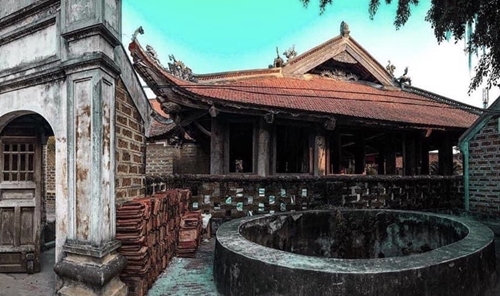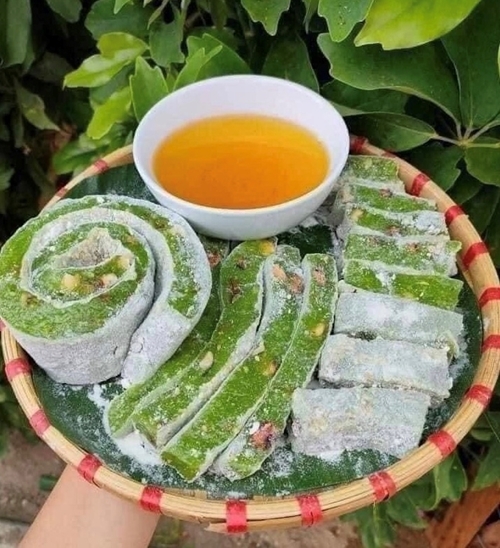Located in Son Tay town, about 45 kilometers to the west of downtown Hanoi, Duong Lam typifies the development of the Red River Delta culture. Undergoing historical upheavals, its architecture as well as cultural and historic relics are still well preserved.
An Ancient Village
Duong Lam once included nine villages, belonging to Cam Gia Thinh canton (Phuc Tho district, Son Tay town), of which the five adjacent villages of Mong Phu, Dong Sang, Cam Thinh, Doai Giap, and Cam Lam are close-knit and share the same customs and beliefs which have been handed down for thousands of years.
    |
 |
|
An ancient well in Duong Lam |
The first striking feature of Duong Lam is its ancient houses with mossy red tiled roofs. Currently, Duong Lam is home to 50 valuable relics including those at provincial and national levels. It is the first village to be recognized (in 2006) as a national historical and cultural relic.
Built in 1684 during the reign of King Le Hy Tong, the communal house of Mong Phu holds all characteristics of a traditional building in Vietnam. Two ancient water wells next to the communal house are said to be the two eyes of a dragon.
Visiting Duong Lam, tourists can easily see houses with century-old mossy fish-scale tiles where generations of villagers have been residing. Traditional customs, beliefs, and other features of a typical Vietnamese traditional village converge here and made the culture of this village.
Nine hundred and fifty six ancient houses (some built in 1649, 1703, 1850) in Duong Lam are mainly located in Dong Sang, Mong Phu and Cam Thinh villages. Featuring five or seven compartments, they were built with a unique architecture and traditional materials such as laterite, pond mud, sapele wood, and bamboo.
Rustic specialties
Over the past hundreds of years, Duong Lam ancient village has still retained its unique cultural values, typical landscapes and architecture of a Red River Delta village, attracting a large number of tourist both domestic and foreign tourists.
    |
 |
|
Che lam and voi (a drink made from Syzygium nervosum leaves) |
According to villager Ha Thi Dien, attention of travelers to Duong Lam is also captured by its must-try specialties such as che lam (Vietnamese nutty ginger sticky rice bar), keo doi (nut candy), and Mia chicken (a kind of local chicken).
“On average, Duong Lam welcomes from 130,000 to 140,000 tourists every year, including 5,000 to 8,000 international visitors. Villagers still preserve the rustic specialties of the region, specifically che lam and banh te (steam rice cake), which are two among a variety of specialties that every tourist wants to enjoy,” added Dien.
Duong Lam is among the few northern villages in the Tonkin Delta that have many specialties associated with the village name such as Mong Phu soy sauce, Mia chicken. All of these products are made from ingredients available in the village, and the crafts have been handed down from generation to generation.
While Hoi An is proud of the old town, Ha Noi is renowned for 36 districts of the Old Quarter, Duong Lam people take pride in ancient houses with unique laterite architecture. The ancient village has always charmed visitors to come to experience and discover its architecture, people, and peacefulness in the middle of the bustling capital.
Translated by Tra My - Thu Ha - Khanh Linh - Thuy Mai